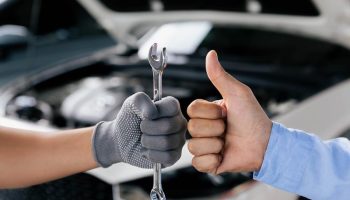Maintaining your car is essential to making sure it runs smoothly and effectively. The significance of the different fluids that keep your automobile running is one important part of car maintenance that is often disregarded. All the fluids serve different purposes in the engine, from cooling it down to lubrication. This article examines the vital fluids in your automobile and offers information on how to maintain and use them.
Engine Oil: Your Engine’s Lifeblood
Engine oil is often described as your car’s lifeblood. It lubricates the moving components of the engine, lowering wear and friction and assisting in the prevention of overheating. Additionally, by capturing impurities and debris that might build up over time, engine oil is essential for preserving and cleaning the engine. It is crucial to periodically check the oil level and replace it at the recommended intervals—typically every 5,000 to 7,500 miles—in the owner’s handbook for your car. It’s also important to use the proper kind and viscosity of oil; for advice specific to your car model, go to the manufacturer’s specifications.
Coolant: Preventing Overheating in Your Engine
Antifreeze, also referred to as coolant, is another essential component in your vehicle. It assists in controlling the engine’s temperature so that it doesn’t overheat while running. Heat is absorbed by coolant as it flows through the engine and is then released via the radiator. Because of the severe circumstances it faces, coolant has to be inspected and changed on a regular basis. Coolant should be flushed and replaced every two years or 30,000 miles, however your car’s specific requirements may change this. Preserving the proper quantity and quality of coolant is crucial in averting engine damage and extending the lifespan of your vehicle.
Brake Fluid: Taking Care of Your Security
The safe functioning of your car depends on having enough brake fluid. It makes it possible for your automobile to stop efficiently by transferring force from the brake pedal to the brake parts. Because brake fluid is hygroscopic, it gradually absorbs moisture, which may cause corrosion in the brake system and reduced stopping power. It is essential for safety to periodically check the amount of the brake fluid and replace it, usually every two years. It could be time to get your brake fluid and system inspected if you find that the brake pedal feels spongy or needs extra effort to push.
Shift Fluid for Smooth Transmission
Both manual and automatic transmissions need transmission fluid. It ensures smooth shifting and functioning by lubricating the moving elements within the gearbox. It also aids in cleaning and cooling the gearbox parts. As you hire the Auto Services in Sumner, WA you can expect the best results in this. Transmission problems may arise from the contamination or deterioration of transmission fluid over time. Transmission fluid should be checked and replaced as recommended by the manufacturer, usually every 30,000 to 60,000 miles, depending on your vehicle. Maintaining the fluid in your gearbox may help you prevent expensive repairs and guarantee smooth shifting.
Power Steering Fluid: Facilitating Handling Power
Your car’s ability to navigate is significantly influenced by the power steering fluid. It helps the power steering system, which lessens the effort needed to move the wheel, assisting drivers in driving their cars. Similar to other fluids, low power steering fluid levels may cause steering difficulties and even damage to the steering system, therefore it’s important to check them on a regular basis. For information on suggested fluid types and maintenance intervals to keep your steering system responsive, it’s best to refer to your owner’s handbook.






